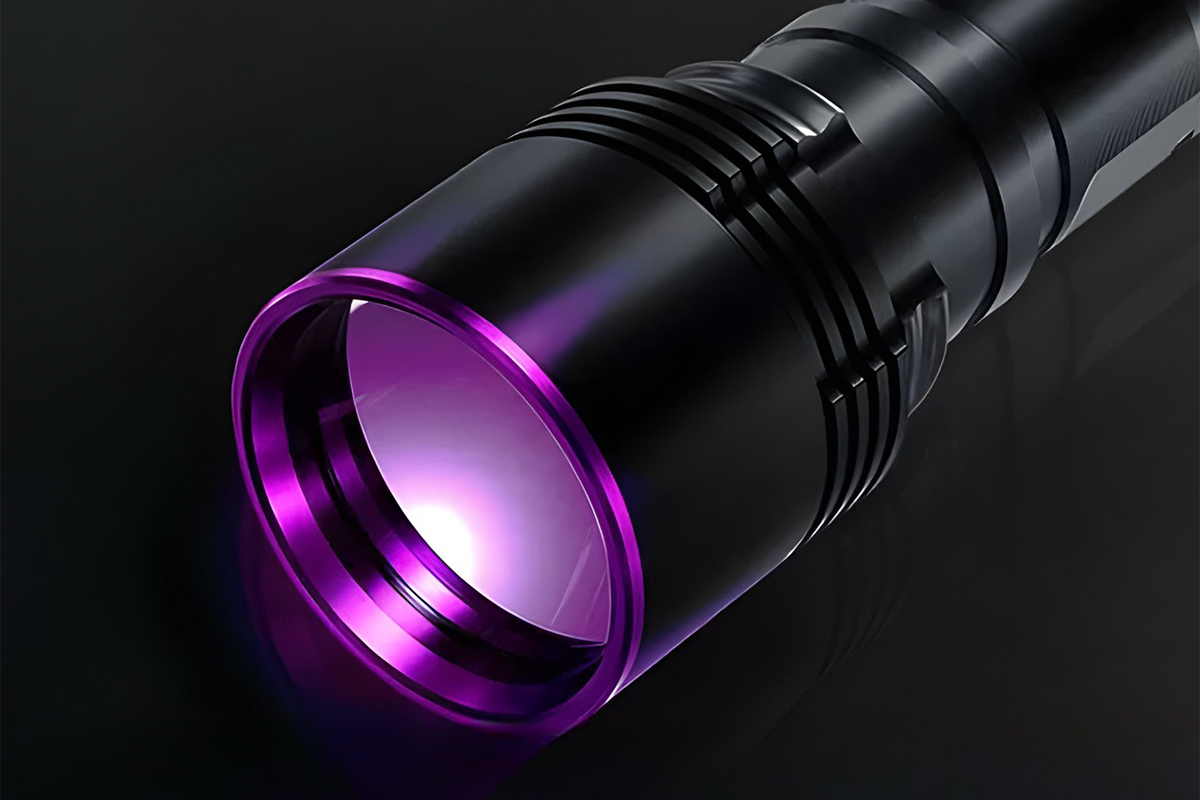
A UV flashlight produces light in the ultraviolet part of the electromagnetic spectrum, which is beyond the range of human vision. It is used to illuminate and detect substances or materials that react to ultraviolet light. UV flashlights are usually designed to emit light in the UVA (315-400 nanometers) or UVB (280-315 nanometers) range, as these wavelengths are more commonly used in applications such as fluorescence detection, document verification, and certain types of inspections. The design of UV flashlights often involves careful selection of the wavelength range emitted by the UV LEDs. Different applications may require specific UV wavelengths. The choice of wavelength is crucial for the flashlight's effectiveness in its intended use. UV flashlights provide unique values by offering a tool for detecting UV-responsive materials. UV flashlights are purpose-built devices with a distinctive design and construction to optimize the emission of ultraviolet light for specific applications. Their ability to unveil hidden details under UV light makes them valuable in various professional, hobbyist, and entertainment contexts.
UV flashlights have various applications across different fields. UV flashlights are used in forensic investigations to detect evidence that may not be visible under regular lighting. Bloodstains, bodily fluids, or other substances that fluoresce under UV light can be identified, aiding in crime scene analysis. UV flashlights are employed in document verification and security applications. Many official documents, banknotes, and identification cards incorporate UV-reactive features that become visible under ultraviolet light. This helps to authenticate documents and prevent counterfeiting. UV light induces fluorescence in certain materials. This property is utilized in various applications, such as identifying hidden stains, checking cleanliness in hotels or hospitals, and inspecting surfaces for contaminants. Enthusiasts and professionals use UV flashlights for scorpion hunting. Scorpions fluoresce under ultraviolet light, making them easier to spot in the dark. This is particularly useful in regions where scorpions are prevalent. Geologists and gemologists use UV flashlights to identify certain minerals and gemstones that exhibit fluorescence. This aids in mineral exploration and gemstone analysis. UV light can expose alterations or restoration work on artworks and antiques that may not be visible in regular light. UV flashlights aid art conservators and appraisers in authenticating and preserving cultural artifacts. UV flashlights assist in identifying traces left behind by insects or rodents, such as urine or other substances. This is valuable in pest control and home inspections.
The design of UV flashlights is a comprehensive process that involves selecting or engineering UV-LED technology, optimizing wavelength selection, incorporating filters or coatings, ensuring durability, choosing an appropriate battery system, considering form factor and ergonomics, implementing a user-friendly switch mechanism, and addressing potential heat generated by the UV LEDs. This holistic approach ensures that the UV flashlight meets the specific needs of its intended applications. UV flashlights leverage the efficiency, durability, and compact nature of UV LEDs. The LEDs are spectrally engineered to emit light within a particular range of the electromagnetic spectrum. Some UV flashlights include filters or coatings to refine the emitted light. These components help to narrow down the wavelength range or eliminate visible light components, enhancing the purity of the UV output. High power UV LEDs can generate a significant amount of heat. To prevent the UV flashlight from overheating, cooling mechanisms are often incorporated. Heat sinks are one common type of cooling mechanism. The design of UV flashlights takes into account the comfort and ease of use for the operator. Ergonomics play a role in the grip, weight distribution, and overall form factor. This is particularly important in applications where the flashlight needs to be held for extended periods, such as in forensic investigations.
























